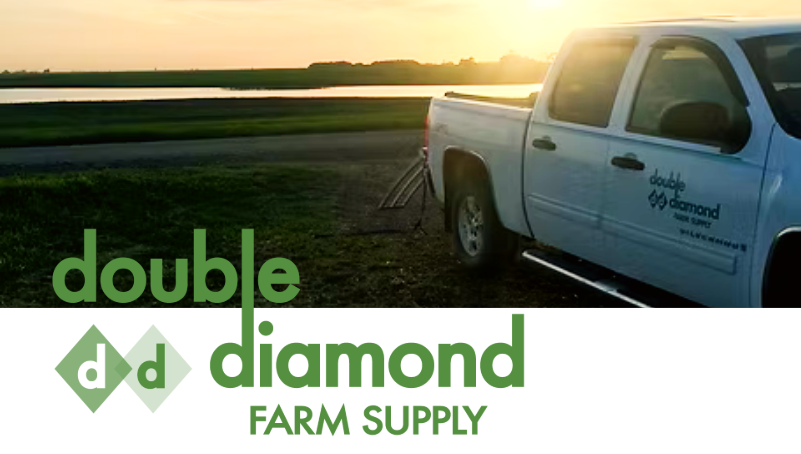Let’s Talk Hard Water
Water quality matters, and the first step in knowing whether or not it’s an issue is to test your water. Your local WinField® United Independent Ag Retailer can help your sample get tested and work with you to determine what the results mean. While hard water (>150ppm) only refers to the amount of calcium and magnesium cations present, it is helpful to get a water test that provides the full cation breakdown including sodium.
In 2023 and 2024, over 900 water samples were collected by WinField United retail partners. The results indicated hard water in 71% of the Manitoba samples, 69% of the Saskatchewan samples, and 47% of the Alberta samples. Based on these sample results, applying pesticide products (such as Antler® brands, Cadillac® brands, or Stonewall® 540) with water from these sources, without a water conditioning agent, will result in tie-up and decreased product efficacy.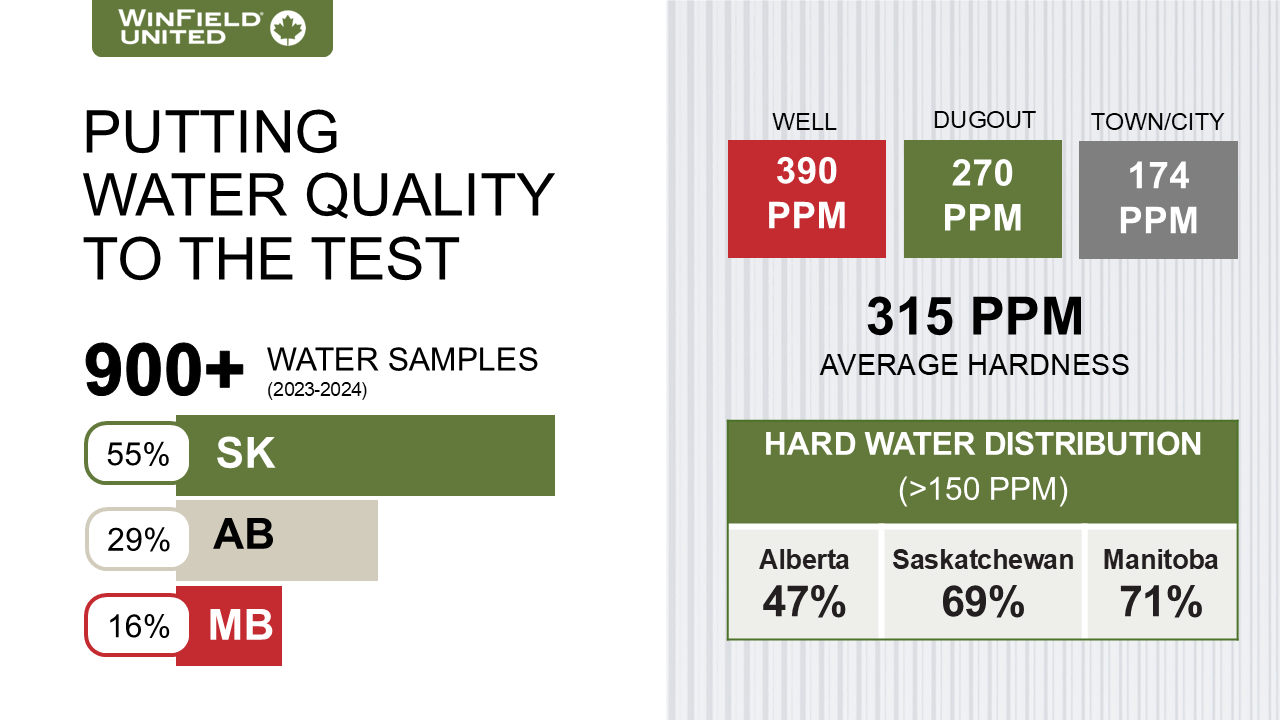
Source: WinField United Canada
Well water and city or town water changes minimally over time, so the same sample in the spring is relevant for your fall burndown. However, dugout and slough water will change throughout the growing season as water evaporates and cations become more concentrated. Therefore, water from these sources should be re-tested regularly prior to spraying as it will often be best in the spring and deteriorate throughout the season.
Regardless of water source it’s not just the hardness of the water that matters – we also need to be mindful of sodium, as water can be soft but if sodium is too prevalent, we will still see herbicide efficacy reduced.
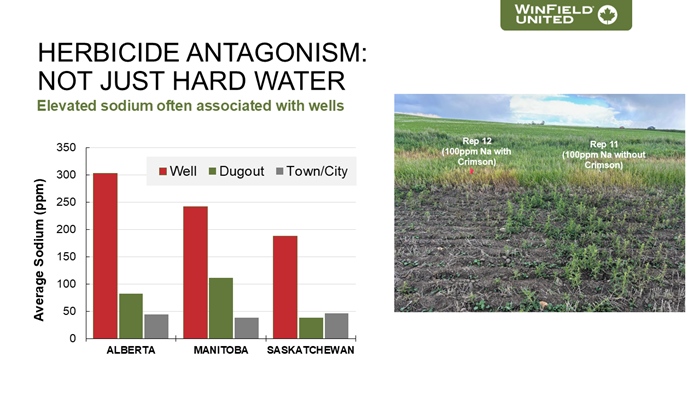
Source: WinField United Canada
Hard water can tie up the herbicide both within the plant, as well as on the leaf surface.
What is Crimson?
Crimson NG is a blend of ammonium sulfate (AMS) and proprietary agents including antifoam. It’s designed to be used with pesticide products that may be affected by hard water, or where the herbicide necessitates the addition of AMS such as some group 27 products. Because of the antifoam component, adding it at the start of the tank will make for the best experience. The AMS is also in a pre-dissolved formulation, making it readily mixable and optimal for handling.
Gerene Cole, an Account Manager with Crop Management Network in Castor, Alberta, explains how Crimson can help protect crops. “There is a lot of money in the tank and the product needs to work as intended. Crimson is another way of protecting this investment of what’s in the tank.” says Cole.
Crimson contains 34% AMS, which is a bit lower than the 40% AMS products that are also available on the market. The reason for this is to increase shelf-life longevity, as higher concentration products tend to salt out within a year, while Crimson has a three-year shelf-life.
The label rate on Crimson is 1 to 2.5% v/v depending on water quality. Dust control can also be achieved by using closer to the 2.5% rate. Kyle Ozipko, Business Agronomist at Sturgeon Valley Fertilizers in northern Alberta, shares his insights on the use of Crimson in these conditions. "We frequently observe that Crimson significantly improves glyphosate efficacy during pre-seed burnoff, particularly in the dust tracks left by the sprayer," remarks Ozipko.
Which Herbicides are Most Concerning?
The main herbicide groups that are affected by hard water are groups 1, 9, 10, and 27. Group 4 products tend to be used in conjunction with many modes of action (MOA), and as they’re sensitive to antagonism, Crimson is a great additive to keep tank mix partners happy. Glyphosate is also particularly impacted by high sodium. Among the group 1 actives, those classified as 'dim' are the most sensitive to hard water, followed by 'fops', with 'dens' having a higher tolerance to hard water. Answer Plot trials in 2024 found that Antler® 360 Unpacked (clethodim) sprayed at 600ppm of hardness water had a significant reduction in wild oat control compared to Antler + Crimson.
“I think of Crimson as the chemistry’s sidekick, but a really important sidekick (like the Robin to your Batman),” says Jarid Wulff, Business Agronomist with Sturgeon Valley Fertilizers.
As pre-burn time rolls around, it’s important to consider whether Crimson would have a fit as part of your pre-burn plan. “Crimson mainly gets used with glyphosate pre-burn and glufosinate in-crop,” explains Cole. “It definitely sharpens up control, especially on hard-to-kill weeds like kochia and lamb’s-quarters along with other weeds with a hairy or waxy layer.”
Within glufosinates, 280g/L concentration formulations have significantly less surfactant than the more standard 150g/L concentration, and therefore AMS is even more important. “Crimson NG has by-and-large been an effective product.” says Pat Toner, Location Manager Warrington AgroDynamic, in St. Walburg SK
Clay Casavant, a Sales Agronomist for AgriTeam Services Inc. in Hafford, SK, observed that generic glyphosate products introduced a few years ago had lower surfactant loads and were less effective than brand-name products due to hard water binding. “The problem was that glyphosate was getting bound in hard water. When Crimson was introduced, we observed weeds were dying faster than before, even when Crimson was added to premium glyphosate products,” elaborates Casavant.
When Don’t We Want to Change pH?
The majority of herbicides prefer neutral spray water and therefore acidifying agents are rarely needed. Certain products, such as saflufenacil, don’t like acidic water and actually see dramatic changes in efficacy on tough-to-kill weeds like lamb’s-quarters and giant ragweed when sprayed in water with a pH of 4 vs. pH 7.7. Group 2’s are also very sensitive to acidic spray water, particularly sulfonylurea(SU) products. With these in acidic water you’ll see low solubility and therefore low plant availability.
We also need to remember that adding glyphosate to the water immediately acidifies it slightly, bringing it close to a pH of 6. Fungicide and insecticide products may not care about the hardness but perform best at a neutral pH and lose half-life quickly when the water becomes too acidic. If spray water gets too acidic we can also see crop injury issues as some actives will become too soluble. Conversely, other actives become less soluble, resulting potentially in plugged sprayers and reduced efficacy as we’ve turned a perfectly palatable product into something that can no longer be absorbed by a plant.
Herbicides have an economic cost, so we want them to work as intended. Water is one of the cheapest ingredients on the farm, so we don’t want water to be the thing impacting the efficacy of these high-end products.
Why Use AMS?
Due to AMS not changing water pH levels, it is the best way to condition water. Crimson is a premium AMS product, offering not just the water-conditioning component but also proprietary ingredients and anti-foam.
“Crimson doesn’t just prevent hard water tie-up – it also has a great antifoaming agent that has been proven to work and be an important addition when glufosinate is in the tank,” says Wulff.
The best way to verify the efficacy of these proprietary additives is to test it yourself and compare to a 40% AMS product – you will visually see the difference. Crimson offers the “next level” in water conditioning products.
“I recommend Crimson because of the visually noticeable difference we see in herbicide efficacy on tough to kill weeds,” says Dale Shaw, Business Agronomist/Manager at Double Diamond Farm Supply in Minto, Manitoba.
This improved efficacy in herbicide is echoed by independent ag retails across the prairies, with Ozipko at Sturgeon Valley Fertilizers saying, “I recommend Crimson by WinField United. We go through a lot of it at Sturgeon Valley due to its efficacy and convenience!”
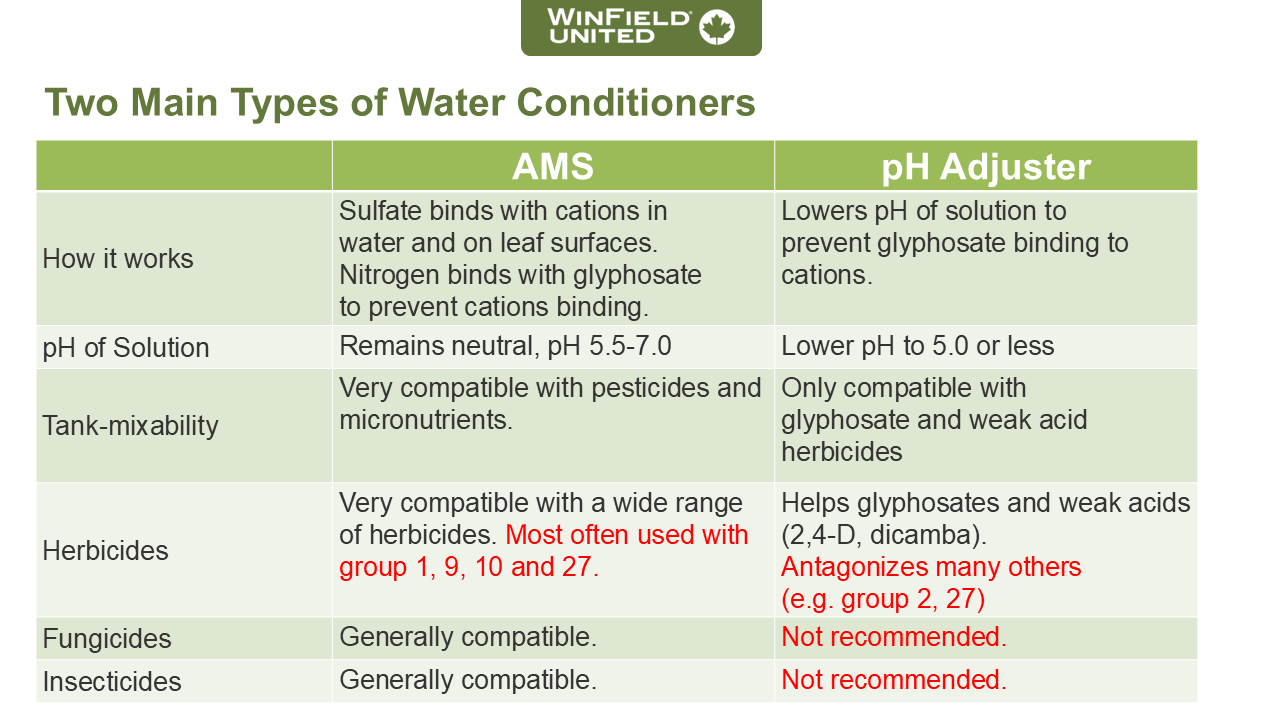
Source: WinField United Canada
Crimson is an easy-to-use water conditioning product, and Shaw at Double Diamond Farm Supply captured its versatility quite well: ”Crimson offers a great deal of versatility for the rate per tank and, with the exception of dicamba, we treat Crimson like Frank’s Red Hot – we put that stuff on everything!”
Herbicide Resistance
This is an issue that has been around for more than 50 years, but each year becomes more problematic with a growing list of resistant weeds and active ingredients affected.
“Herbicide resistance is a huge concern in our area and we’re seeing resistance in all our primary weeds,” shares Kevin Mohan, Sales Agronomist for Emerge Ag Solutions in Eston, SK. “If they’re not outright resistant to a product, they’re showing tolerance to what we’re applying and requiring higher application rates of herbicide.”
If hard water is impeding our herbicides from working as well as they should, then water quality plays a role in fighting the battle against resistance.
"When you add Crimson to the tank, you ensure that you’re going to get a good kill. If we can add it and make the herbicide work more effectively, that is a strong step toward helping with the development of herbicide resistance,” shares Ozipko.
Herbicides are one of the most important crop inputs on the farm, and it’s crucial that it works as expected. This growing season, keep in mind the factors that can affect how well the herbicide does its job to protect your investment. For more information about Crimson NG, reach out to your local WinField United Independent Ag Retailer.
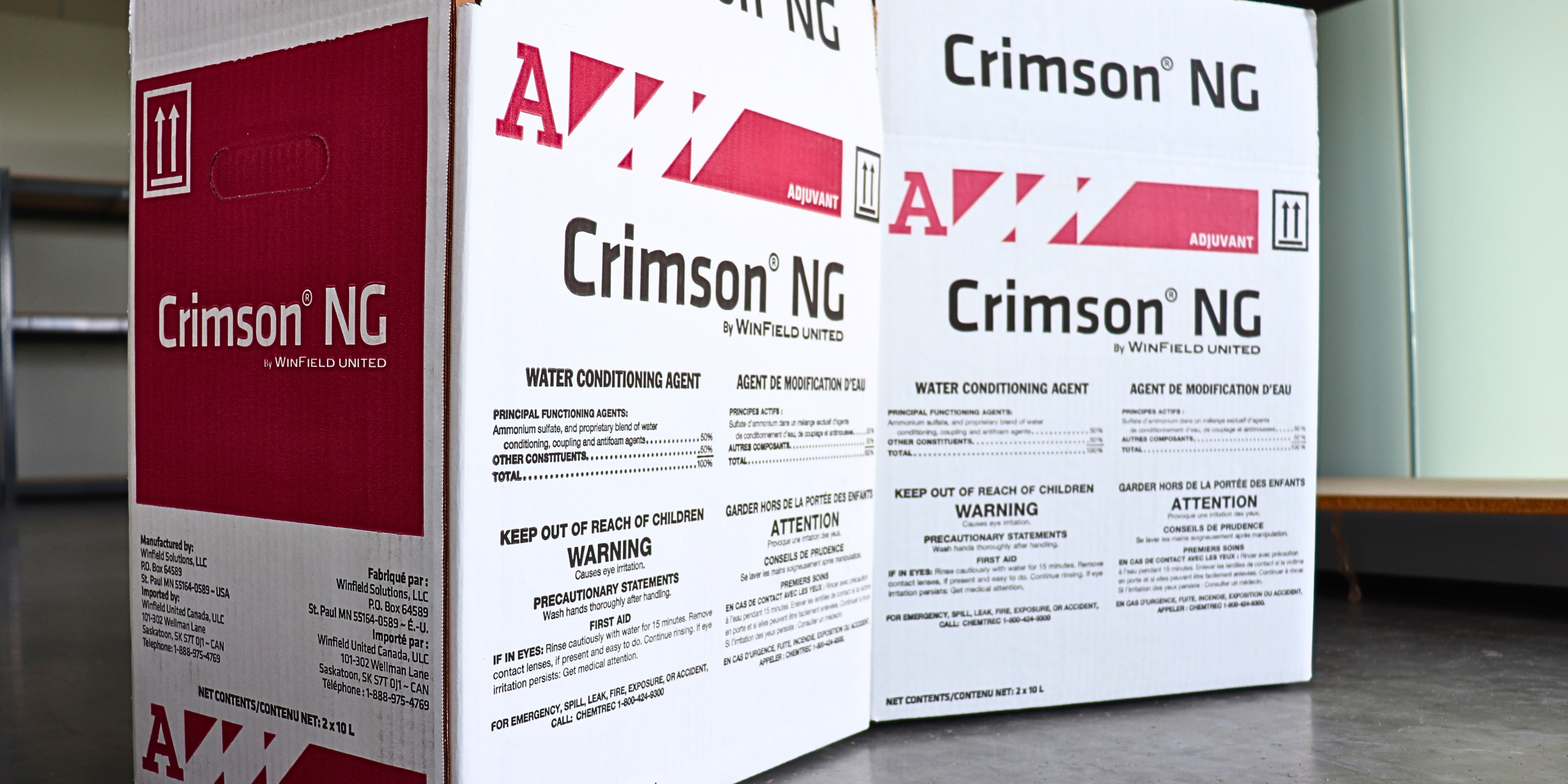
.png?ext=.png)
